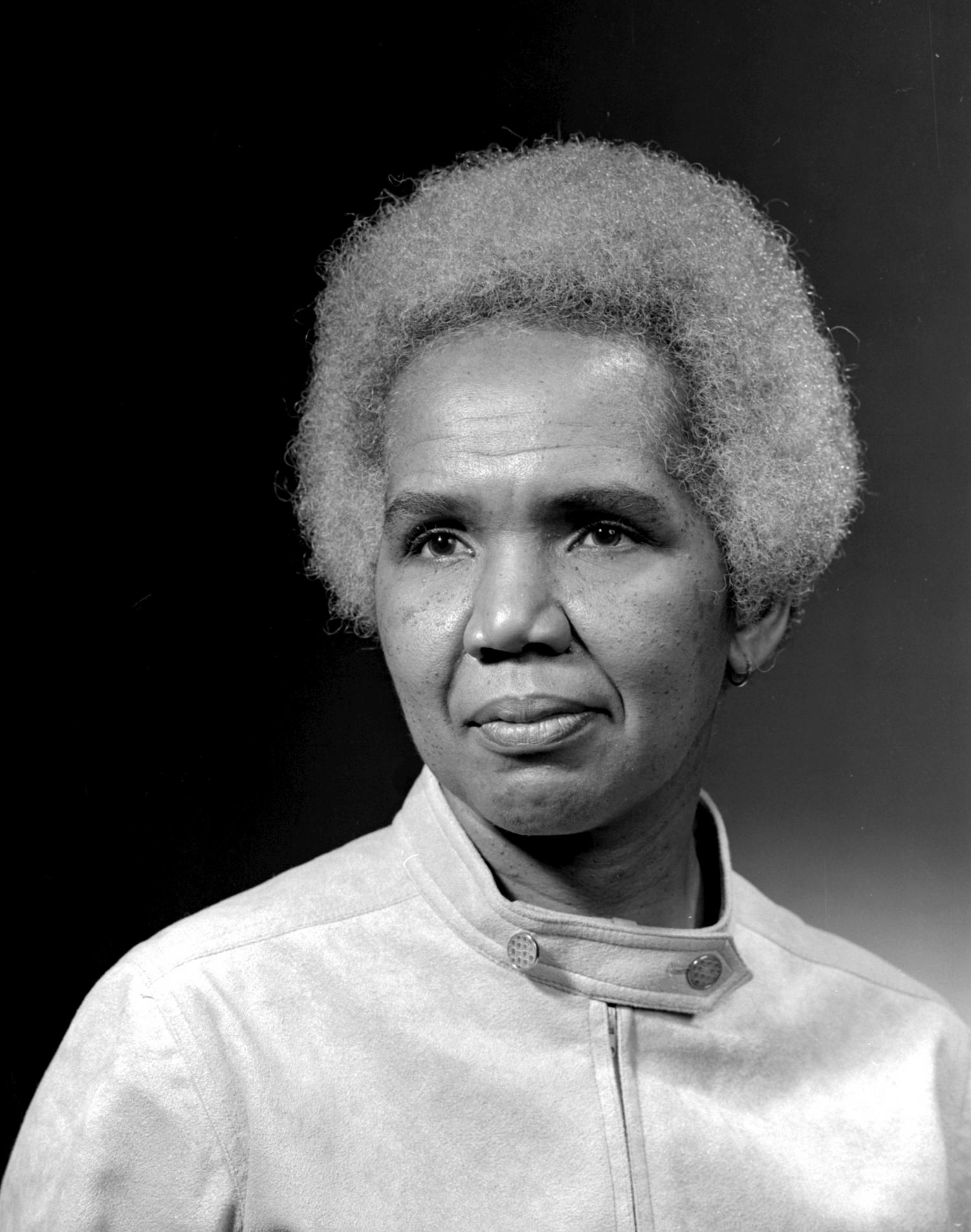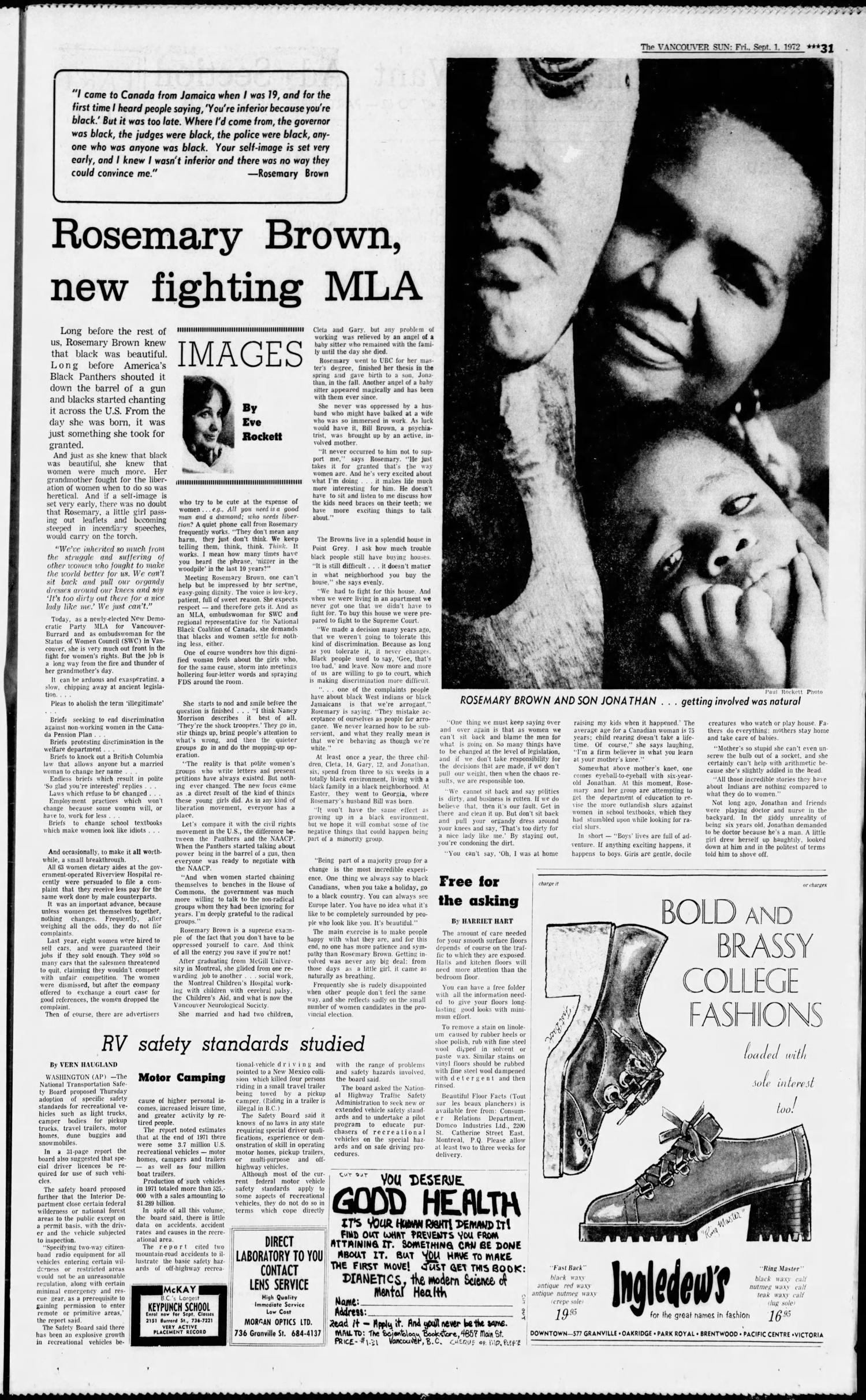First Black Female MLA Elected
Rosemary Brown fought for greater equality all of her adult life
Date: 1972
Rosemary Brown was a collector of firsts. She paved the way for all Black female politicians in British Columbia who followed her.
Born in 1930 in Kingston, Jamaica, Brown came to Canada in the early 1950s to study at Montreal’s McGill University. Her time at university quickly opened her eyes to the country’s racism. Finding friends, a summer job or even a place to live proved a struggle for a young woman of colour. But if the bigotry she faced shocked her, it did nothing to Brown’s self-worth. “I knew I wasn’t inferior,” she said years later. “There was no way they could convince me.”
In 1955, Brown, née Wedderburn, headed west to marry a future psychiatry professor named Bill Brown. In British Columbia, she was met with more intolerance — and vehicles for change. Soon after arriving in Vancouver, she joined the British Columbia Association for the Advancement of Coloured People (BCAACP). She was also an early member of the Voice of Women, a feminist organization focused on promoting peace and social justice. A pioneer of intersectionality before it even had a name, Brown’s advocacy often focused simultaneously on racism and sexism. “To be Black and female in a society which is both racist and sexist is to be in the unique position of having nowhere to go but up!” she once quipped.
By the late 1960s, Brown, now a mother of three, was a well-known social worker who made regular appearances on a national television show called “People in Conflict.” However, she remained restless. As a fierce feminist and anti-racism advocate, she felt disheartened that white feminists didn’t appear to understand racism, while many people of colour failed to recognize the significance of sexism, according to Brown. This unease spurred Brown to throw herself even further into activism. In 1971, she helped establish the Vancouver Status of Women Council (VSW). A year later, on Aug. 30, 1972, Brown became the first Black woman elected to the B.C. legislature.
As an NDP MLA for Vancouver-Burrard, she worked to remove sexism from school curricula and prevent discrimination based on gender or marital status, among numerous other initiatives aimed to make B.C. a more equal society. Brown stayed in the legislature for 14 years, though she had even higher ambitions during this time. In 1975, she became the first woman of colour to run for the leadership of a Canadian federal party. Her slogan was “Brown is Beautiful.” Ultimately, she came in second to Ed Broadbent, who led the NDP for the next 14 years.
In 1986, Brown left politics, but she never stopped working. During her final years, she ran an international development agency that focused on female advancement, taught women’s studies at Simon Fraser University, co-founded the Canadian Women’s Organization, and headed the Ontario Human Rights Commission, to list a few of her final undertakings. In 1995, Brown was appointed to the Order of British Columbia. A year later, she became an Officer of the Order of Canada. In 2003, Brown died of a sudden heart attack. She was 72.
Sources:
- Bellett, Gerry. “B.C. Heroes: Rosemary Brown.” Vancouver Sun [Vancouver, B.C.], 3 Mar. 2011, vancouversun.com/news/bc-heroes-rosemary-brown.
- Caton, Martin. “Rosemary Brown.” WorkersHistoryMuseum, workershistorymuseum.ca/rosemary-brown-2. Accessed 3 Apr. 2021.
- Cengage. “Rosemary Brown.” Encyclopedia.Com, 18 May 2018, www.encyclopedia.com/people/philosophy-and-religion/other-religious-beliefs-biographies/rosemary-brown.
- Dattan, Gretta, and Jessica Schmidt. “Vancouver Status of Women.” UBC Archives, blogs.ubc.ca/vswarchives/vancouver-status-of-women. Accessed 3 Apr. 2021.
- Howard, Jessica. “Founding Mothers.” Canadian Women’s Foundation, 23 Feb. 2021, canadianwomen.org/about-us/our-story/founding-mothers.
- Ito, Gail Arlene. “Rosemary Brown (1930–2003).” BlackPast.Org, 20 Aug. 2019, www.blackpast.org/global-african-history/brown-rosemary-1930-2003.
- Kapoor, Pam. “Remembering Rosemary Brown: Commemorative Stamp to Be Launched in February.” Match International, vol. 33, no. 1, Jan. 2009, p. 1.
- Kome, Penney. “Rosemary Brown.” Section 15, 2 June 2000, section15.ca/features/people/2000/06/02/rosemary_brown.
- Myrie, Evelyn. “Rosemary Brown, Canadian Politician Born.” African American Registry, 13 Feb. 2021, aaregistry.org/story/rosemary-brown-a-canadian-political-fixture.
- “Rosemary Brown.” BC Black History Awareness Society, 2021, bcblackhistory.ca/rosemary-brown.
- “Rosemary Brown and Black History Month 2020.” Royal B.C. Museum, 26 Feb. 2020, royalbcmuseum.bc.ca/blog/post/022620/rosemary-brown-and-black-history-month-2020.
- Snyder, Lorraine. “Rosemary Brown.” The Canadian Encyclopedia, 27 Jan. 2010, www.thecanadianencyclopedia.ca/en/article/rosemary-brown.
- “William Theophlus (Bill) Brown.” The Province [Vancouver, B.C.], 2 Apr. 2016, www.legacy.com/obituaries/theprovince/obituary.aspx?n=william-theophlus-brown-bill&pid=179492219&fhid=5858.




